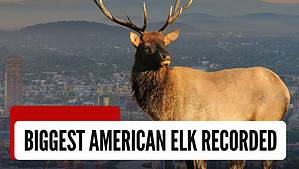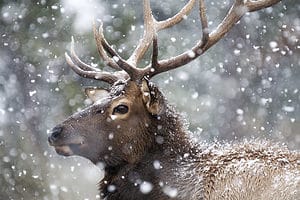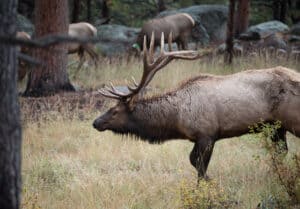Irish elk and moose are some of the largest members of the deer family to ever exist. While Irish elk are extinct and moose are still around, there are a lot of similarities between the two. Irish elk, an ice-age relic, are truly magnificent animals to imagine, although they didn’t exclusively live in Ireland. Moose are present in much of the world today and hold the top spot for the largest deer alive. Let’s take a look at these two behemoths and explore: Irish Elk Vs Moose, what makes them different?
Comparing Irish Elk and Moose

| Irish Elk | Moose | |
| Antlers | 12 feet from tip to tip, up to 88 lbs | 5 foot 11 from tip to tip (depending on species), only males |
| Size and weight | 6 foot 11 at the shoulder, 1,500 lbs or more | 6 foot 11 at the shoulder, 1,400 lbs on average, have been recorded 2,300 lbs |
| Range | Old World. Ranged from the western Atlantic Ocean to Lake Baikal (eastern Russia) | North America, Europe, Asia |
| Habitat | Lake regions, peat bogs, open forests of spruce and pine, steppe-woodland | Cold-adapted animals, northern regions without deep snow, require forests and shrublands |
| Extant or Extinct | Extinct, last individuals lived 8,000 years ago | Extant, lives in much of the world |
Key Differences Between an Irish Elk and a Moose
The main differences between Irish elk and moose are their size, their habitat, and their status as a population.
Irish elk and moose are two of the largest members of the Cervidae family, or deer, as they are commonly referred to. When comparing size, the main difference came down to their antlers (Irish elk had significantly larger racks). Aside from that, the two deer species were incredibly similar, with only the Alaskan moose potentially having a size advantage.
Additionally, moose and Irish elk generally inhabited different biomes. Irish elk preferred peat bogs and spruce forests. Moose are found further north than Irish elk were and prefer forested areas and open meadows. They can tolerate snow but prefer to avoid deep snow as they can be attacked by wolves more easily.
By far, the largest difference between the two is their current status. Moose live all over the world and are currently the largest deer species in the world. Irish elk are extinct and have been for at least 8,000 years.
Irish Elk Vs Moose: Antlers
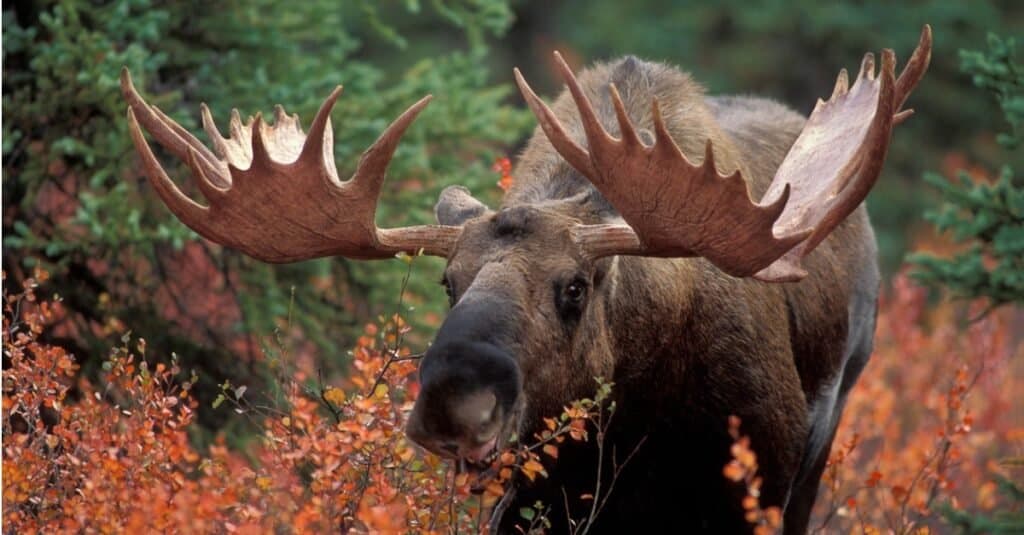
Irish elk have the largest antlers out of any deer to ever live, including the moose.
©iStock.com/RONSAN4D
Irish elk are famous for having the largest antlers of any species of deer in history. On average, Irish elk have antlers that span 12 feet across and weigh 88 lbs. The largest specimens ever discovered had racks that were up to 13 feet across. Instead of having antlers like a modern deer, characterized by spindles and tines coming from a primary antler, Irish elk had a massive single sheet that other tines then came out of. In some ways, their antlers resembled an oak leaf.
Moose are quite large, especially when it comes to their antlers. Still, they can’t compete with the Irish elk. On average, moose have racks (the set of antlers on their head) of around 6 feet. In some places, they can be larger, but even the largest don’t compete with the elk.
Irish Elk Vs Moose: Size and Weight
Irish elk and moose are similar in size but have a few differences when it comes to their build. They are both tied for the third-largest deer in history, although the moose is the largest extant deer alive today. Irish elk likely averaged 1,300 lbs, with does being slightly smaller. Male Alaskan moose (the largest species of moose in the world) average almost exactly 1,300 lbs as well.
Irish elk were likely thinner than moose are today, giving them a larger appearance than modern moose. Still, the overall mass and weight of the two are almost identical. They both stand around 7 feet at the shoulder, and their females are sexually dimorphic, about 80% of the mass of the males.
Irish Elk Vs Moose: Range
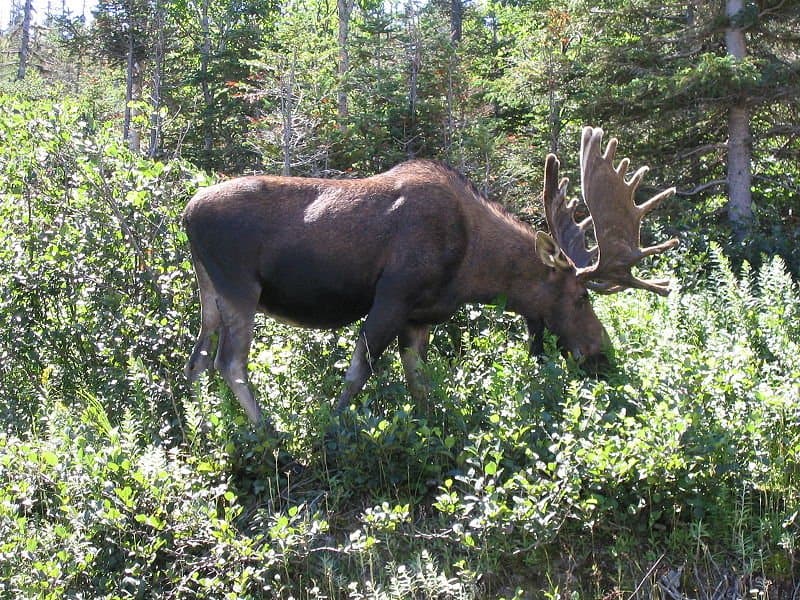
Moose live in the northern regions of North America, Europe, Siberia, and Asia. Irish elk lived in most of Europe and into Asia.
Irish elk are Old World deer, meaning they didn’t live in North or South America. Although their name implies they only existed in Ireland, that isn’t the case. In fact, Irish elk were pretty far-ranging and lived through most of Europe and into Asia. Their far eastern range ended around Lake Baikal, a massive freshwater lake in Russia, near Mongolia.
Moose have a large range to this day. They live in North America, starting in the northern regions of Maine and Washington, they live all the way north through Canada and into Alaska. In Europe, they live in large numbers in the northern regions of Norway, Sweden, Finland, Latvia, Estonia, Poland, Russia, and in smaller numbers in Belarus and Ukraine. Additionally, they live in China and Mongolia. They get their name from the large numbers that likely lived in Ireland.
Irish Elk Vs Moose: Habitat
Irish elk and moose inhabit different biomes, one of the major reasons that moose are still around today and Irish elk aren’t. Irish elk historically preferred regions near lakes and peat bogs. Most of their range is determined through skeletal remains, and they have been found in spruce and pine forests and lowland sedges and meadows. They mostly avoided the steppes to the north in Europe, where mammoths once roamed.
Moose are generally found further north than Irish elk were. They prefer regions with lots of water and cover from predators. They also travel through the seasons to help avoid massive weather shifts. Moose can be found in forested regions and valley meadows. One of the stipulations for moose habitat is that the snow doesn’t get too high since wolves prey heavily on moose. High snow means low mobility and limited escape for a heavy moose.
Irish Elk Vs Moose: Extant or Extinct
Irish elk have been in the fossil record since the Pleistocene Epoch. They lived through much of Europe and Asia, with a high population in Ireland, hence their name. The fossil record indicates that they went extinct around 10,000 years ago when warm temperatures killed off the remaining population. They likely died out from a combination of climate change and human hunting. Humans extensively painted about Irish elk in caves, with some being found more than 36,000 years ago.
Moose are still alive and thriving in much of the world. The ancestors of the moose likely evolved 2 million years ago on the warm savannahs in Europe. Today, there are eight recognized subspecies of moose.
The photo featured at the top of this post is © Daniel Eskridge/Shutterstock.com
Thank you for reading! Have some feedback for us? Contact the AZ Animals editorial team.




